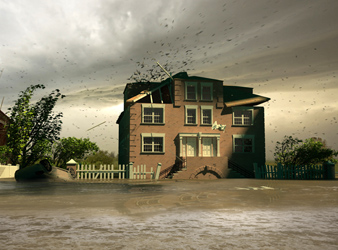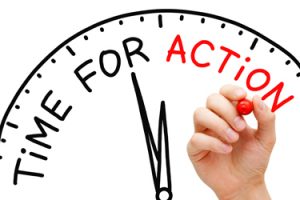3 Actions Required To Minimize Flood Damage & Mold
All life–plants, animals, and humans–is composed of cells, which require water to function. In fact, cells can not survive without water. The human body, which is made up of 50% to 70% water, and it’s trillions of cells require water to function properly.
Water is a life force, without it we can not survive; but it can also be very destructive causing disease, property damage, and long term health issues.
Mold is a fungus and also has cells, but can not survive without water. Water and moisture is the key ingredient mold needs to grow; unlike a plant which can make its own food using photosynthesis, mold is unable to. The three ingredients mold needs to thrive and grow include the following:
1. A food source, which is material high in cellulose content: paper, wood, drywall, wallpaper, carpet, ceiling tiles, dust, and dirt.
2. The ideal temperature, between 5 degrees and 38 degrees.
3. Of course, as mentioned above, water and moisture. Mold can not proliferate and thrive without water. Hence, the best defense against mold is to minimize moisture.
Mold is everywhere. It has a purpose in our eco-system, ie. to break down dead organic matter from animals and plants. This is the reason that mold is often referred to as “nature’s recycler”. Since mold is everywhere, we are constantly exposed to it and inhale mold spores everyday. If the spore count is relatively low, as it is in the outdoor environment, it does not cause too many health concerns.
In an indoor environment, however, with less ventilation and fresh air, mold will cause problems because the concentration of spores will increase resulting in unhealthy air. In short, mold causes sickness when it grows indoors because the spore count increases as mold reproduces meaning larger concentrations of spores are inhaled.
The other major problem caused by mold relates to structural damage. Like a cancer or parasite, once mold begins to grow it will continue to feed on its host leading to dry rot of the wood, buckling foundations, and other structural damage, like possibly a collapsing roof.
In order to minimize flood damage you need to take immediate action to prevent the onset of mold.
Action Step #1: Water and Electricity Do Not Mix
Safety is the first major concern. If you have flood water entering your home or business, you need to take immediate action to avoid electrical shock. This means you need to remove any extension cords that are under water, turn off the breakers in flooded areas, and most importantly, if you need assistance, call your electrical utility for help.
Action Step #2: Immediate Clean Up Is Essential
Contact Mold B Gone immediately because we are professionals and have the protective gear, equipment, and experience to take action.
Mold needs water to grow so it is absolutely imperative that the clean up process starts right away. Preventing mold growth is accomplished by removing all of the water and then deploying drying equipment, air movers, and dehumidifiers. Once the water is out, and much of the excess moisture is removed, the next step is to remove all of the porous contaminated material such as drywall, wet carpet, etc. and dispose of it. This is particularly important if there is any category 3 water in the home. Once the flooded area is properly gutted and the contaminated material is disposed of, it is important that the area is dry and disinfected before any reconstruction begins.
Sometimes, during a major storm, when many households are affected by flooding, restoration companies can become overwhelmed with calls. While they are waiting, many home owners will begin the clean up process themselves. If you decide to begin the clean up process, we strongly suggest that you use rubber gloves, boots, protective clothing, and a respirator.
Action Step #3: Call Your Insurance Adjuster
Dealing with a flood can be stressful and overwhelming, but rest assured if you implement the first two action steps and then call your insurance adjuster to begin the claim process, everything will be fine. Remember, the whole process of water damage restoration is to restore your home to pre-flood condition.
Call (470)545-4467 or send an e-mail. Mold B Gone has been serving residents of Atlanta since 2009 and have the experience to manage any water damage situation, big or small. Plus, we guarantee all of our service.
Three Steps to Reduce #Flood Damage: A flooded home or business is always a stressful situation. This blog provides you with the 3 steps required to reduce flood damage and most importantly, #mold!
Posted by Mold-B-Gone Remediation, LLC on Sunday, September 6, 2015
Three Steps to Reduce Flood Damage http://t.co/7K8SWDQAH7 (#mold prevention is the key) PLS RT pic.twitter.com/2BiCsvgceK
— Mold B Gone (@moldbgonega) September 7, 2015


